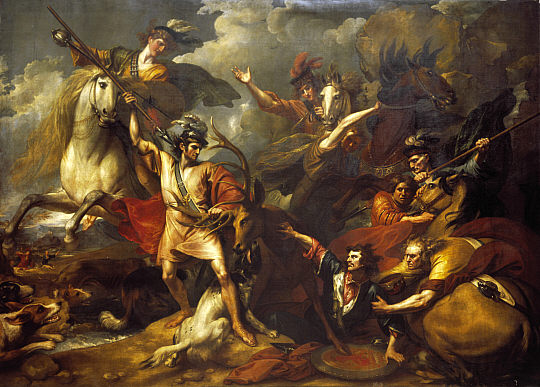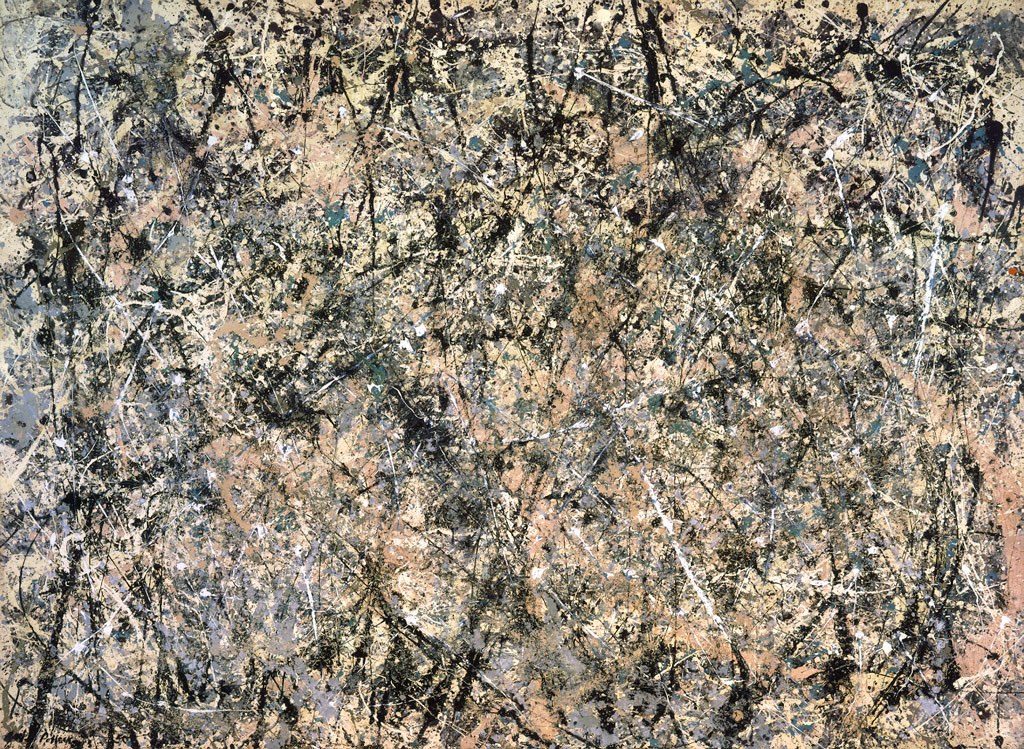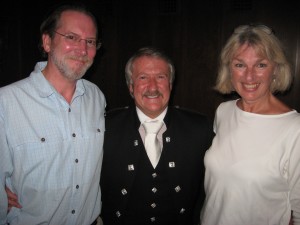We were prepared to discover a new world of subtle taste and aroma–and to learn frothy new adjectives to describe it–but we were utterly unprepared for the controlled explosion that is Richard Paterson. Sleek Falstaff in a kilt, Paterson is the master blender at Glasgow-based Whyte & Mackay, but the job title cannot contain him. A self-appointed ambassador of whisky, Paterson is a performance artist who marries marketing savvy with outright bombast, a ringmaster and all three rings combined. In the span of two hours, Paterson spoke nearly nonstop, mostly at a break-neck pace, coming up for air only to plunge his nose deep into a glass or to quaff the delectable distillate, usquebaugh, “the water of life.”

We were handed an Isle of Jura 10-year-old at the door and were met with this at our tables: four more expressions of Jura and six expressions of Dalmore, including the 1992 Mackenzie and the King Alexander III.
Paterson joined Whyte & Mackay in 1970, and was named master blender just five years later, at the age of 26. He had his first taste of Scotch whisky when he was eight. The glass was handed to him by his father, who also made his living by his nose, as did his grandfather. He recalls seeing his father, silhouetted by a rising wall of whisky casks, pour the golden liquor in the glass, swirl the glass with vigor, then thrust his nose deep inside to disentangle the aroma and identify the strands of its enticing web.
“What do you think of it?” his father asked.
“Well, er, it’s very nice, Dad,” the youngster replied.
“Very nice?” his father gasped. “Is it heavy like your grandfather? Is it light like your mother? Is it sweet like chocolate? Is it dry like the dust on the floor?”
If you wonder where Paterson got his patter, it runs in the family.
The event was arranged by Elliott Fishbein, the hospitable muse of Town Wine & Spirits, in Rumford, and was hosted by Agawam Hunt, the private country club, also in Rumford. My brother Rick and I–we grew up in the Rumford section of East Providence–were joined by my wife Nonnie, a South County lass whose taste is drawn to smoke and peat and salt and seaweed. She’s a Lagavulin 16, if you know single-malt whisky. I’m an Edradour 1o. Rick is a newcomer to whisky, and he could not have found a more profitable portal through which to make his first appearance.
About 90 participants, fewer than ten women, age span 35 to 65 or thereabouts. Nice buffet. Attractive room. Paterson delivered a power-point presentation that was light on graphics and heavy on verbiage. He has the penetrating voice of a sideshow barker and the deft pacing of an evangelist, slowly rising to a grand peak that ends in a humorous remark or a glorious profanity, then letting us down gently to gather ourselves for the next crescendo. And there was always a next.
He knows his history, and when he mentioned a date that was crucial in the timeline of single-malt and blended whisky, he mentioned the month, day, and year. And time of day. And sometimes the weather. After a half dozen such references, we knew they were coming, which only added to the delight at the payoff. The day in 1263 when Colin Fitzgerald, first chieftain of the clan Mackenzie, saved the life of King Alexander III by killing the twelve-point stag about to impale him–partly cloudy, Paterson said with the gravity of a witness under oath. Down came the house.

Benjamin West's "Alexander III of Scotland Rescued from the Fury of the Stag by the Intrepidity of Colin Fitzgerald." Dimensions: 12 feet x 17 feet. Weather: partly cloudy. (Scottish National Gallery image)
When he mentioned Henry VIII shuttering the realm’s more than 800 monasteries, Paterson spat on the floor. A reference to Queen Elizabeth I was met with another volley of spittle. Holding the glass with hand cupped under the bell and taking a quick whiff, he said, “If you nose the glass like this, you’re an asshole. If I ever see you hold the glass like this, I’ll kill you.” When he demonstrated how a Boston bartender once filled his whisky glass with days’ old ice redolent of fish, he violently threw whisky and ice across the room against the hardwood wall at Agawam Hunt.
So we learned in vivid manner the history of single malts and blended whiskies, what gives whisky its flavor (80 percent comes from the wood that makes the cask), how to bring awareness to the taste of crushed almond and burnt sugar and lemon peel, of marmalade and licorice as the liquor cascades across the taste buds, over and under the tongue, so that, as Paterson said of Jackson Pollock’s paintings, “the inner world will be revealed” when you regard them long enough. A wonderful analogy, I thought. “To extract the flavors, that’s what your mouth is for,” said Paterson–in a stampede of neural messages that tumble into the brain and heart.

"Number 1, 1950 (Lavender Mist)" by Jackson Pollock, 1950, National Gallery of Art. “Abstract painting is abstract. It confronts you," Pollock said. "There was a reviewer a while back who wrote that my pictures didn't have any beginning or any end. He didn't mean it as a compliment, but it was.” (National Gallery of Art image)
Paterson showed us how to nose the whiskey, slowly, with an open mind and a relaxed deliberation, inhaling the aroma and then pulling away from the glass. To rest. Three times he did this, always slowly. Then he took a mouthful and let it splash on its own inside his mouth, as the alcohol and phenols released their, uh, alcohol and phenols, I guess. He didn’t get into the chemistry of the thing, which I’m sure is fascinating, beyond saying that the marriage of water, air, grain, and wood is a beautiful thing. An acquired taste? Of course. What isn’t? And what area of human endeavor and accomplishment is not richer the more it is savored? So whisky works its wonders, and we’re all the better for it.

Speaking of marriage, here we are with Richard Paterson. "Love makes the world go 'round? Rubbish," he said. "Whisky makes the world go 'round--and twice as fast." (Photograph by Rick O'Brien)
At evening’s end, Nonnie preferred the Dalmore Grand Reserva: “As densely satisfying as heavy bittersweet chocolate.” Rick preferred the Jura 21: “By far my favorite. It wasn’t even close. Head and shoulders above everything else.” I preferred the Dalmore 18. Here’s how the blessed anonymous marketing copywriter characterizes Dalmore 18 on the company website: “Matured initially in American white oak for 14 years before being transferred to Matusalem Spanish sherry butts for 3 years, these unique whiskies were finally married for a further 12 months in upstanding sherry butts. Nature and nurture have delivered a classic Dalmore. Rich walnut brown in colour with copper highlights. A charming aroma of pine, lemongrass, and cinnamon. A galaxy of chocolate, vanilla, Colombian coffee, truffles, and rosemary tantalise the palate. An enduring aftertaste of violets and jasmine.”
A description worthy of Paterson himself. But we cannot say “guidbye” to great writing without mentioning Charles McGrath’s wonderful story in the New York Times Magazine of July 21. He captures Paterson perfectly as he tells the tale of the master blender’s assignment to recreate the whisky that Ernest Shackleton took with him and his crew on their 1907-1909 expedition to the South Pole aboard the Nimrod. Three cases of the stuff were found in February 2007 by a team restoring Shackleton’s Antarctic hut. Paterson’s nose and palate determined enough information to construct it anew. As McGrath so nicely puts it, “And yet the new whisky is also a very modern and even an artificial artifact, the product of science and technology as much as of antiquarian connoisseurship. It’s like a CD that has been engineered to sound like vinyl.” It’s a fascinating story, told here. And, of course, McGrath is wise enough to give Paterson the last word, as will I, as the Scotsman relishes a glass of delicious Jura Superstition: “Ah,” he says, his eyes flashing with delight. “Drink it with the wind and rain in your face, and it will come alive.”
